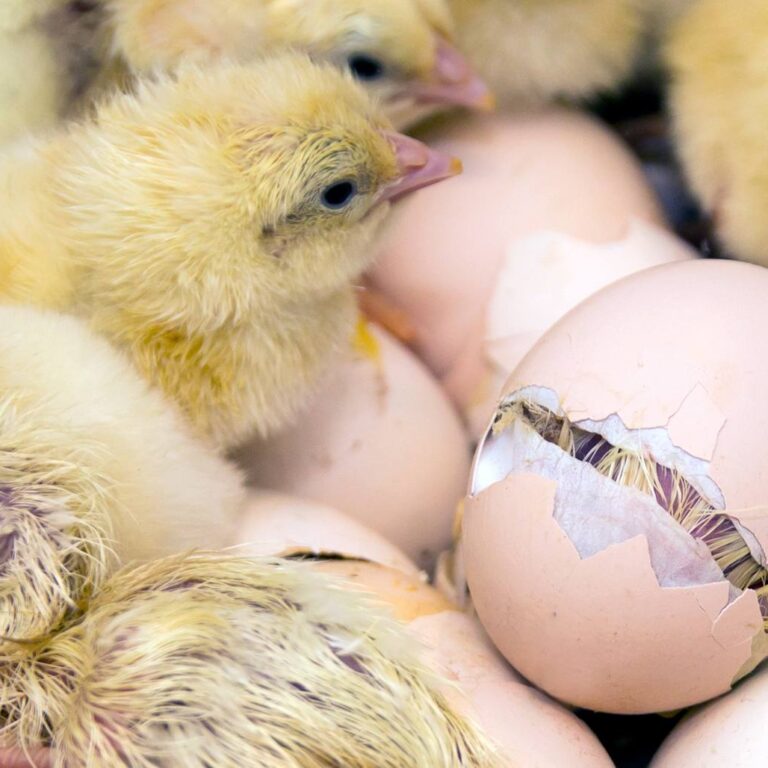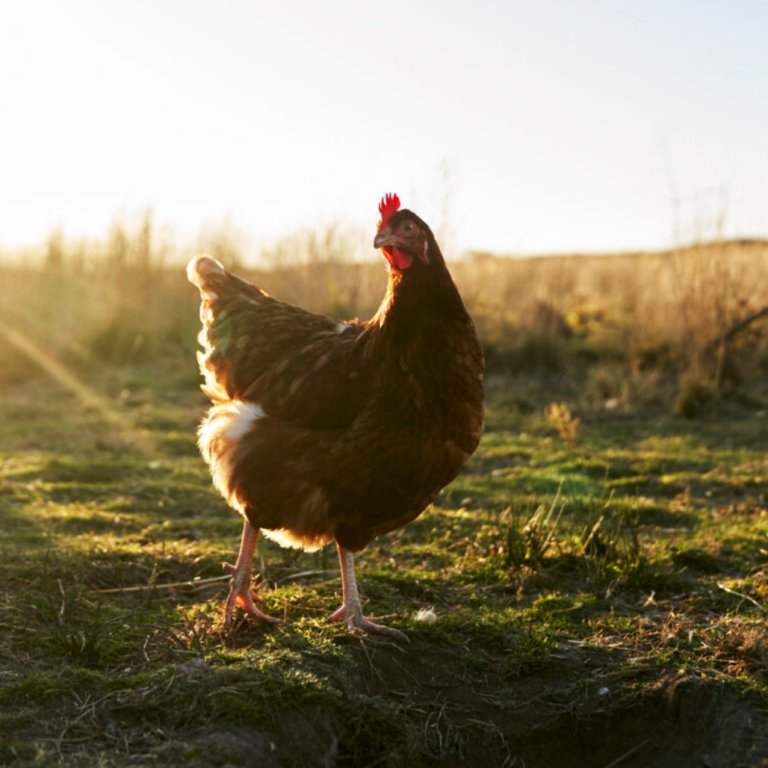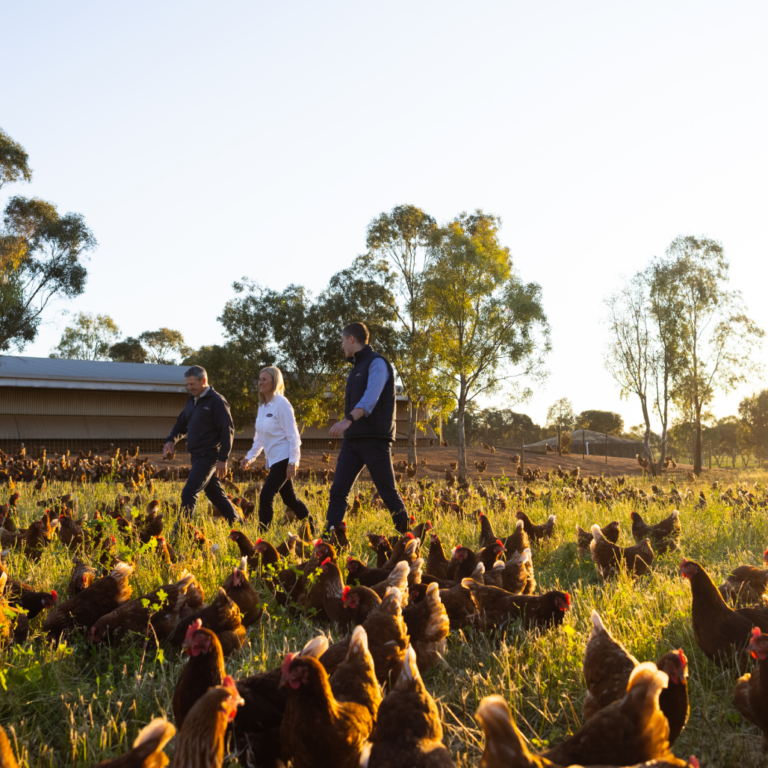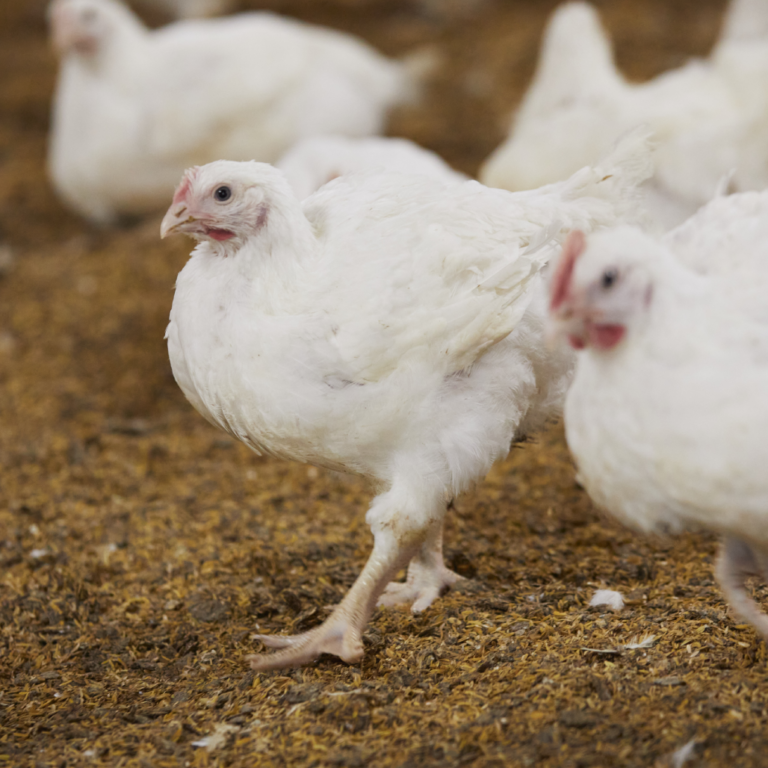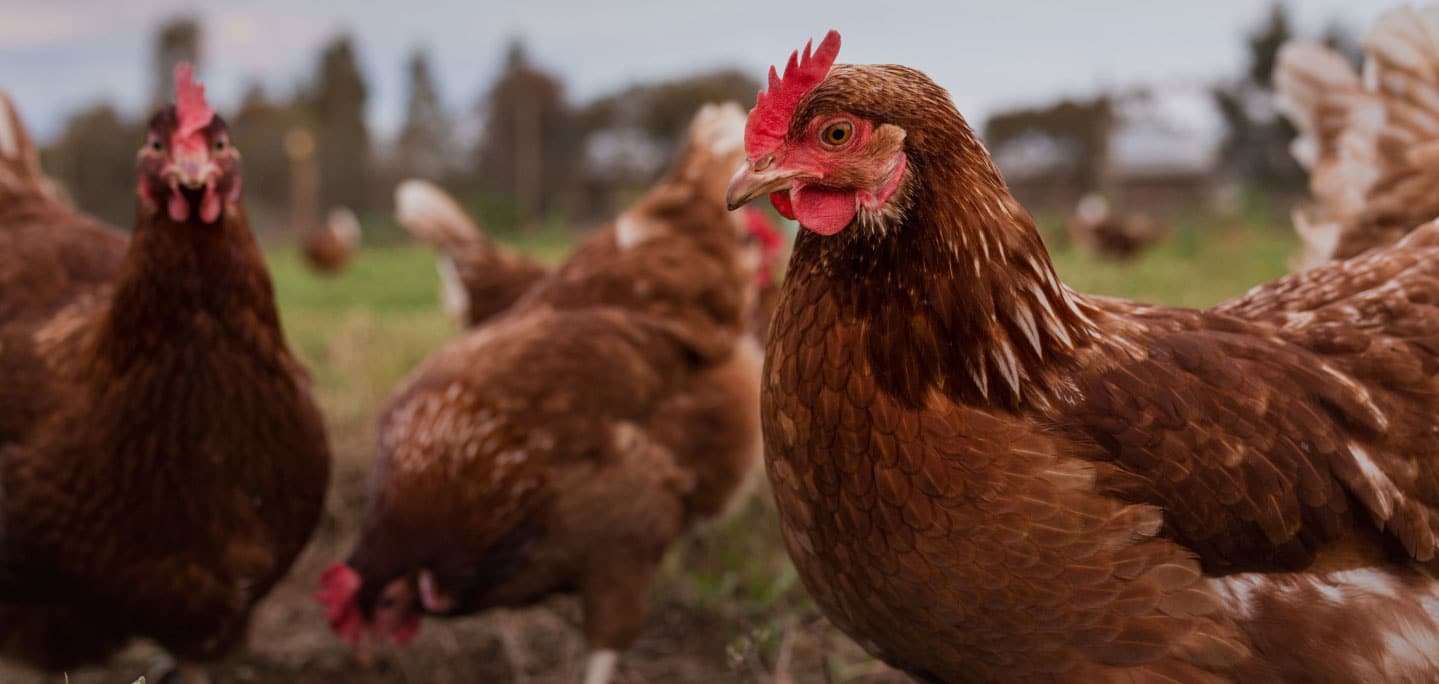What to do with male chicks is one of the biggest challenges faced by the egg industry and is an ethical issue that concerns many Australian farmers and consumers alike. And quite rightly so – with around 23 million day-old male chicks killed every year, simply because they are male and therefore can’t lay eggs, it’s without doubt an issue that we need to address. But in order for the solution to be sustainable, it needs to be commercially viable as well as humane.
In Australia, at any given time, there are around 23 million egg-laying hens. These are birds that have been bred to lay large numbers of eggs rather than grow muscle for meat. And with the popularity of eggs on the rise, the number of hens needed to lay these eggs is set to rise too. At the hatchery, where fertilised eggs are incubated and hatched, there isn’t yet a commercially viable way of determining which of the eggs will hatch female chicks (who will grow to become hens) and which will hatch male chicks (who can’t lay eggs and would grow to become roosters).
What this means is that in order to ensure there’s enough supply of female chicks to meet the demand for hens (a hen’s productive life is around 1 year), it is necessary to hatch double the number of chicks needed – as half of these chicks are likely to be male. Unfortunately, as well as being unable to lay eggs, these male chicks aren’t the type generally considered suitable for chicken-meat production. This means they are killed shortly after hatching.
What if it didn’t have to be this way?
Dr Mark Tizard is a Senior Scientist in genome engineering at the CSIRO’s Australian Centre for Diseases Preparedness. He tackled this question on an episode of the RSPCA’s Humane Food podcast with host Brian Daly.
Sharing an exciting new technology developed by CSIRO researchers, Brian and Mark discussed how this technology could end the culling of male chicks.
Mark said before any of the eggs start to form recognisable structure, the technology identifies the cells destined to be male through the eggshell.
“What we’ve done is placed a gene on the chicken’s equivalent of the Y chromosome that identifies the animal will be growing up as male. And that gene essentially expresses a little protein. It’s a perfectly harmless protein, all it does is glow red when you shine a laser light onto it,” Mark said, “we can see it through the eggshell as soon as the egg is laid.”
From an animal welfare perspective, this is good news because it means that any potential to cause suffering to either a hatched or unhatched chick is completely eliminated. It makes sense commercially too. Hatcheries won’t need to incubate and hatch double the number of eggs, which improves workflow, sustainability and profitability.
What’s even better though, is that there is a very practical use for the eggs that are identified as male, so the wastage of fertilised eggs is avoided as well.
“One of the things we can do with the eggs we identify as male and remove from the system is actually take them across into the production of vaccines,” Mark said.
“Many people aren’t aware that the flu vaccine, that’s used every year for the seasonal flu, is actually grown in eggs. And there has to be a supply of eggs to the companies that manufacture that vaccine.”
Does this mean our eggs will be genetically modified?
The short answer is no. The hens are not genetically modified (GM) because they never get marked. Neither are the eggs they will lay for our food.
How does that work? Well think of humans, where mums have two X chromosomes and dads have an X and Y chromosome. When ovum and sperm are made they each only get one of those chromosomes. Mum can only provide an ovum with one of her two Xs but dad provides a sperm with either an X or a Y. This process is called chromosome segregation.
The embryo is destined to grow up physically male if the mum’s X joins with dad’s Y. If the mum’s X joins with dad’s X then the embryo will grow up physically female. In chickens, we use the marker to find the male-determining chromosome. Because we remove the male eggs from the system, we effectively also remove the marker from the system. In chickens, the sex determining chromosomes are called Z and W but the principle is the same.
“It’s recognised by regulators as something that’s been used in plant breeding for many years,” Mark said.
The technology is used to remove the males and avoid the cull. At the same time, improving the ethics, carbon footprint and sustainability of the industry.
Where to from here?
While this new technology is exciting and presents a real opportunity for the egg industry to improve outcomes for male chicks, there’s still a little way to go. And you will play an important role.
“At the end of the day, it’s the consumer, it’s the public that will decide whether this is a great way or not,” Mark said.
“And the companies, they’re hesitant. They see the value, but they are also concerned about what the public will make of this. I think they are pretty confident this is such a good solution, and is something the public can understand and not be concerned about, and realise the eggs they’re getting in the supermarket are the same as today,” he said.
Mark also added that scientists are mums and dads too and want to know the food they are feeding their families is safe.
“We are only doing this because we truly believe, based on evidence, that there is a pressing need with real benefits for everyone and, most importantly, that it is safe for humans and for animals.”
Listen for more interesting details
In the episode Why are male chicks culled and how can this be changed? you’ll hear more about the CSIRO’s exciting work in this field, how the technology works, what it means for your food, and importantly, what’s next.
Available for free, wherever you find your podcasts, the RSPCA Humane Food podcast explores a range of animal welfare, farming and food topics that we know interest Australians. With two seasons now available you can hear, through conversations with business owners, experts and the RSPCA, ideas and practical ways Australians can and are making a big difference to farm animal welfare.

